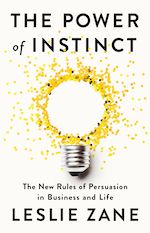Considered one of the first formal marketing theories, the funnel has been treated like gospel by nearly every marketing, sales and media department in the business world. Though there are a number of variations, it essentially consists of five stages: awareness, interest, desire or consideration, action or conversion and loyalty or advocacy. The funnel is often simplified to awareness, consideration, conversion and loyalty. Somewhere along the line, most businesspeople are taught they must work their way through this funnel.
The widest part at the top of the funnel is known as the awareness stage. It narrows as prospective customers progress through their journey, ideally moving from brand awareness to brand loyalty or advocacy at the funnel’s narrow end. Each stage calls for a different overt marketing technique meant to help usher the potential user through the funnel, priming them at each stage for the one that follows.
What Is a Brand Connectome?
A brand connectome is an approach that focuses on expanding the instinctual associations that buyers have with a given brand through growth triggers like metaphor and humor. The brand starts as a seed and expands in the brain’s neural pathways as the buyer continues to develop positive associations with a given brand. Eventually, their association with the brand is large enough that it becomes the buyer’s first choice.
Marketers think that if consumers have already heard of the brand (the awareness stage), they are more likely to conduct their own research or listen to specific information in the interest stage. From there, desire and consideration deepen. And so on. But the funnel doesn’t take into account what’s actually happening on an instinctive level — the growth and expansion of the “Brand Connectome.”
Think of a brand as a seed that you plant in the mind of your target audience. As you learn new information about the brand, associations get added to your brand’s neural pathways. If you provide enough positive associations simultaneously, these pathways or branches can extend out in different directions, and a robust network can form all at once. The moment your Brand Connectome is fully grown with a larger physical footprint and more positive associations than your competitors’ connectomes, the consumer is ready to choose your brand, meaning they take action and make a purchase. When your tree grows so high its canopy blocks out the rest of the forest, your brand just became the automatic first choice. Stages have nothing to do with it. The real process that occurs is not linear because that’s not how our brains function. People don’t make decisions sequentially or based on some rational linear model. But it’s easy to understand how the funnel concept became popular. Breaking the process into stages gave marketers a way to manage and, more importantly, measure it. Or so they thought.
Measuring the stages of the decision-making process doesn’t get your target audience any closer to making a choice. Plus, working your way through the stages of the funnel, if approached in this traditional manner, is like watching a kettle boil, seemingly taking forever. It also causes leaders to spend excessive amounts of money on consumer promotion and other techniques that are hit or miss.
But, when approached through the lens of connecting with the instinctive mind, the funnel becomes obsolete. Turns out, you can accelerate the growth of your Connectome and bypass the funnel all together. That’s where “Growth Triggers” come in.
How Growth Triggers Can Disrupt the Marketing Funnel
Just like fertilizer boosts a lawn, Growth Triggers accelerate the Brand Connectome, fueling a surge of growth. What is a Growth Trigger? It’s a succinct code or cue in any of the five senses, all of which are packed with positive associations. Direct-to-consumer companies often use Growth Triggers more effectively than many of the top Fortune 500s. That may be because they were never taught the old marketing rules in the first place. Fortune 500 companies’ marketing departments are more likely to train their people in traditional marketing techniques. But, the right content paired with the right cues that match consumers’ memories is in many ways more valuable than having deep pockets. When filled with Growth Triggers, that content implicitly creates a flood of positive associations. It bypasses rational thought and fabricated emotional benefits and goes straight to the instinctive mind, with multiple themes and rich associations. By tapping into the brain’s shortcuts, you eliminate the need for stages and accelerate the customer conversion process.
You don’t need to spend a lot of money to drive growth; you just need to supercharge your communication with the right content. One of the best examples of this accelerated process is found in the success of Dollar Shave Club. When Dollar Shave Club released a YouTube video in 2012, not even founder and CEO Michael Dubin knew what was about to happen. The video, featuring Dubin as the company’s spokesperson, went viral.
But it wasn’t just that the video was “funny” or that the mostly millennial audience is a major direct-to-consumer (DTC) customer. Dubin was tossing out Growth Triggers at us in rapid succession, tapping into positive associations in the audience’s brain and creating a sprawling connectome.

That’s the power of the Brand Connectome. Once you know how to modify it, you can shift the most resistant behaviors— whether smoking, political partisanship, or brand loyalty— in a short period of time. Because now, instead of forcing people through the marketing funnel, you are playing to their existing associations and memories, breaking down resistance at an accelerated pace. Metaphors and humor are powerful devices that are particularly effective in this process.
Metaphors
Metaphors are the Michael Jordan of instinctive devices, quickly shifting entrenched perceptions and behaviors in the ultimate slam dunk. By incorporating metaphors in your messaging, you can bombard your audience with positive associations and rapidly grow your connectome. As super-effective Growth Triggers, metaphors indirectly influence people’s minds, leveraging what already exists in their memories. Because they ride on existing neural pathways, they help change perceptions quickly, reframing an idea almost instantaneously and becoming part of the interconnected vectors in the brain. The most effective metaphors are those that are common or incorporate well known examples, making them easier for the brain to grasp. Though some might argue this approach reeks of cliché, remember, familiarity is a good thing. Using common metaphors is better than using obscure ones.
For example, if I were to say a company’s growth has the trajectory of the Titanic, you would easily understand what I meant. If I were to say a company’s growth has the trajectory of the Barge 129 whaleback— a sunken ship discovered in Lake Superior in 2022 — it’s not going to have the same impact.
Humor
In addition to metaphor, humor is another device that can help break through resistance and quickly build a connectome. But not any old humor will do, as shown with Quiznos and Skittles in their 2023 Super Bowl ads. Much of the humor seen in marketing communications today is superfluous: unrelated silly humor, humor for humor’s sake or humor that tries to leverage a cultural trend but is disconnected from the brand itself. All of these go in one ear and out the other. Similar to how marketing and advertising professionals can sometimes conflate creativity with effectiveness, humor is sometimes undertaken simply to get a laugh. And though the result can be funny, it is often forgettable or irrelevant. Instead, the humor presented must be connected to the benefit you’re providing to your target audience or highlight a contrast between you and your competitors. Otherwise, you won’t create a sticky enough association to get glued to the brain and grow the Brand Connectome.
As a rhetorical device, humor can have a similar impact as metaphor. It stimulates your brain, draws you in, and can leave a lasting impression on your connectome that facts or figures alone cannot. Where it’s different from a metaphor is that when we “get” a joke, we feel part of the crowd and closer and more aligned with the person telling it. That’s why it’s particularly powerful in politics. The point the politician is making becomes more memorable because of the humor, and we side with them in the process. But humor that is just used to get a laugh, without making a point, is a useless endeavor. By using humor as a shortcut to deposition your competition or accentuate a benefit or expertise, your message becomes stickier and seeps into the memory structure faster, creating nearly immediate salience— and that’s no joke.
The marketing funnel’s 100-plus-year reign proves how ingrained it has become. And much like many of the other conscious marketing approaches, the concept of the funnel distracts marketers from what they really need to be focused on: building the physical footprint of your brand. The stages of the funnel are unnecessary. If you use the right codes and cues, build enough positive associations, and succinctly connect with the audience on an instinctive level, you can drive brand choice in one fell swoop.
***
Excerpted from The Power of Instinct by Leslie Zane. Copyright © 2024 by Leslie Zane. Used with permission of Hachette Book Group, Inc. New York, NY. All rights reserved.





